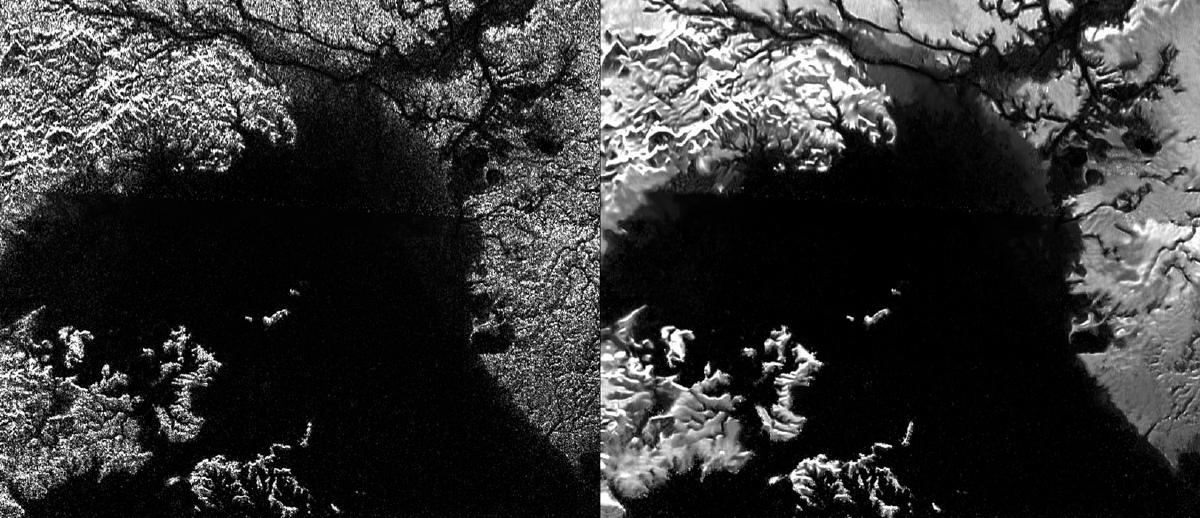New Technique Shines Light on Titan, Largest Moon of Saturn (Photo)

A new image-processing technique is bringing Saturn's largest moon, Titan, into clearer view than ever before.
More than 10 years of observations by the Cassini probe have mapped almost half of the giant moon's surface. The NASA probe, which is exploring the Saturn system, has uncovered the largest dune fields in the solar system and hydrocarbon lakes that grow and shrink with the seasons on Titan. But now, recent improvements in image processing have made the radar images look better than ever, according to the space agency.
Any picture is going to contain some amount of noise, which typically manifests itself as a grainy, specklelike appearance. But this noise makes it hard for scientists to spot small features or identify changes across the images.

The grainy appearance of the images particularly bothered Antoine Lucas, at the astrophysics division of France's nuclear center. "Noise in the images gave me a headache," he said in a statement. So Lucas dug through literature published in the mathematics community (a little far removed from those working in scientific research) and discovered that a team near Paris was working on just what he needed: a de-noising algorithm.
Lucas worked closely with that team to apply their algorithm to the Cassini radar data, and it has made all the difference, he said. "My headaches were gone, and more importantly, we were able to go further in our understanding of Titan's surface using the new technique," said Lucas.
As it stands, the technique, called despeckling, takes a lot of computation. So the radar team is going to have to prioritize which images deserve preferential treatment in receiving the additional algorithm.
Nonetheless, it's a great start that "provides a fresh look at the data, which helps us better understand the original images," said Stephen Wall, deputy team leader of Cassini's radar team, which is based at NASA's Jet Propulsion Laboratory in Pasadena, California. "With this innovative new tool, we will look for details that help us to distinguish among the different processes that shape Titan's surface."
Get the Space.com Newsletter
Breaking space news, the latest updates on rocket launches, skywatching events and more!
Follow Shannon Hall on Twitter @ShannonWHall. Follow us @Spacedotcom, Facebook and Google+. Original article on Space.com
Join our Space Forums to keep talking space on the latest missions, night sky and more! And if you have a news tip, correction or comment, let us know at: community@space.com.

Shannon Hall is an award-winning freelance science journalist, who specializes in writing about astronomy, geology and the environment. Her work has appeared in The New York Times, Scientific American, National Geographic, Nature, Quanta and elsewhere. A constant nomad, she has lived in a Buddhist temple in Thailand, slept under the stars in the Sahara and reported several stories aboard an icebreaker near the North Pole.











